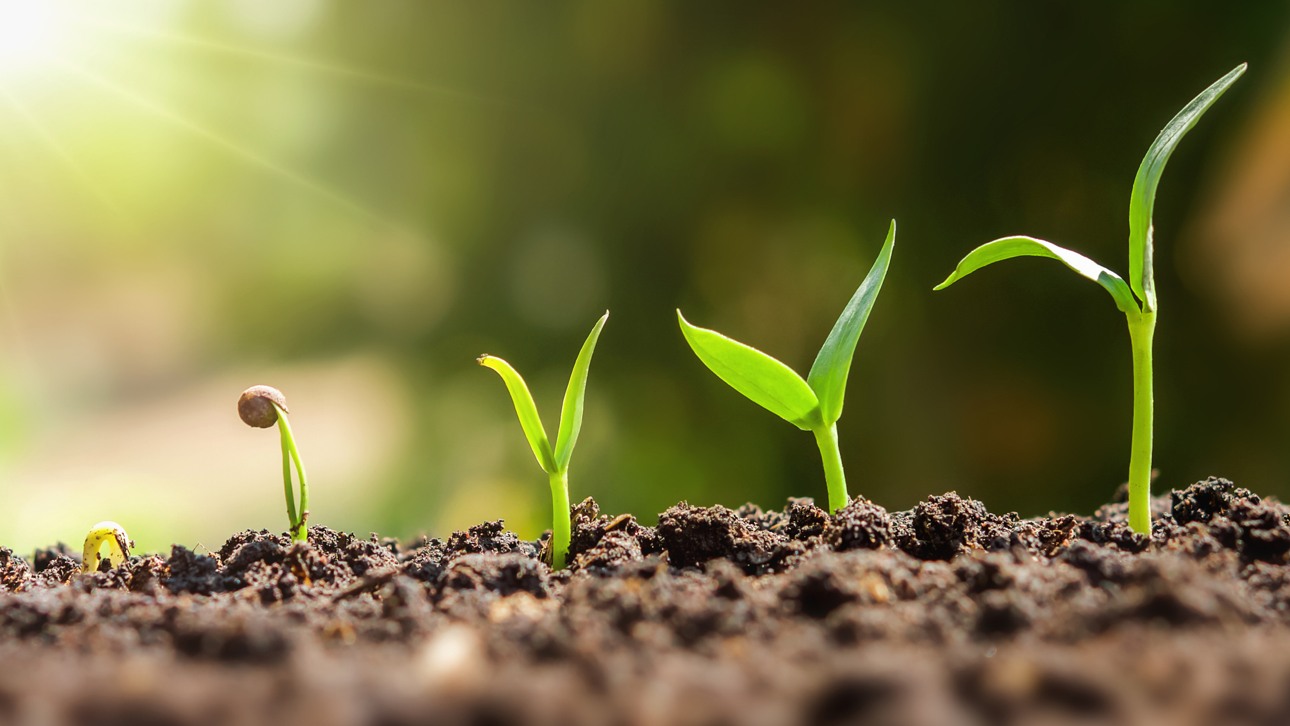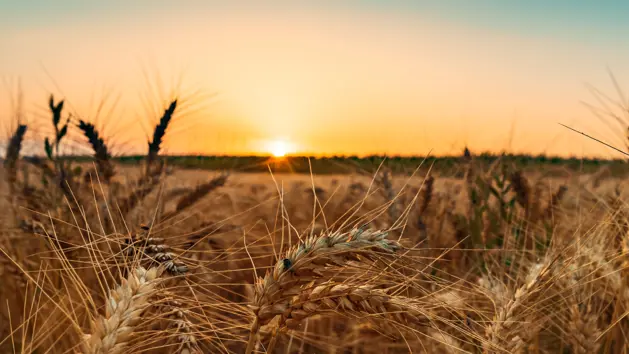
Recycled quota crucial for phosphorous
Phosphorous (P) is a key nutrient in the global food value chain yet arguably one of the most underappreciated essential elements on the periodical table. While the European Commission added phosphate rock to its Critical Raw Materials list in 2014, more needs to be done, now, to simultaneously stimulate recovery technologies and encourage market uptake of recycled phosphorous.
18 Aug 2021In short, phosphorous is an indispensable element for all forms of life, and amongst other things, plays an important role in the metabolic transfer of energy in plants and animals, in genetic material (DNA), in nerve cells and in bones.
– That’s why phosphorous is a key component in agricultural fertilisers, used to promote plant growth, vitality and yield, and in feed phosphate, to ensure the vitality and health of livestock, says Anna Lundbom, Marketing and Product Sales Manager at EasyMining.
However, phosphorous is a finite resource, extracted primarily from phosphate rock (apatite) that is found in a few deposits around the world. Herein lies the challenge. Globally, approximately 85 percent of the extracted phosphate is used in fertilisers and around 7 percent is used in livestock feeds. In Europe, there is a small deposit in Finland meaning that over 90 percent of phosphorus used in the EU-27 (The 27 member countries of the EU) is imported from outside the EU. In numbers, figures (2017) from Eurostat and Fertilizers Europe suggest that the EU-27 uses about 1.1 million tonnes of elemental phosphorous in European fertilisers.
Growth of sewage sludge incineration
This implies that the entire EU agriculture- and food value chain is almost completely reliant on imported phosphorus, with all the associated geo-socio-political risks that such dependency entails. Thus, from a circular “grow, eat, defecate and flush” perspective, it stands to reason that sewage sludge, a residual of municipal wastewater treatment plants (WWTPs), would be the natural go-to source of “post-consumer” phosphorous for recycling. Using sanitised sewage sludge as a fertiliser is though strictly regulated on account of it containing other undesirable components, such as heavy metals, pharmaceutical residues, consumer chemicals, and microplastics.
As a result, agricultural valorisation of sewage sludge is decreasing. Instead, sewage sludge incineration is fast becoming the sludge treatment method of choice. Especially for high population density countries like the Netherlands, and Germany. In doing so, the volume of sludge material is radically reduced, sanitary safety is ensured, and organic contaminants such as pharmaceutical residues, microplastics or PFAS (Per- and Polyfluoroalkyl Substances) are eliminated.
Leveraging sewage sludge ash
According to figures compiled by EasyMining, an estimated 990 000 (dry) tonnes of sewage sludge was incinerated in the EU-27 in 2017. By 2030, this is expected to over double to around 2.26 million tonnes. Left from incineration is the sewage sludge ash (SSA) that contains both the desirable phosphorous (but in a form which is no longer plant-available) along with unwanted heavy-metal contaminants. This means that as ash, the phosphorous cannot be recycled to agriculture and goes to landfill, something that EasyMining has addressed.
EasyMining has developed Ash2Phos, a proprietary chemical process to recover phosphorus without contaminants from the ash.
– The ash from mono-incinerated sewage sludge typically contains seven to ten percent phosphorus making it a rich source to recover phosphorous from, says Anna Lundbom.
The three-step chemical process is energy efficient using room temperatures and atmospheric pressure.
– With our Ash2Phos extraction process we can recover at least 90 percent of the phosphorous from the sewage sludge ash, Lundbom says.
Quota needed to stimulate market uptake
Already in 2014, the European Commission added phosphate rock to its Critical Raw Materials (CRM) list. More recently, in its “Farm-to-Fork” Strategy, the Commission has proposed a target to reduce nutrient losses by at least 50 percent, without deteriorating soil fertility, resulting in a reduction in fertiliser use of at least 20 percent.
When it comes to phosphorous recycling, Germany and Switzerland have come the furthest with phosphorous recovery from sewage sludge to become mandatory for wastewater treatment plants – for all sewage and meat and bone meal ash in Switzerland, for sewage works 50 000 person equivalents (p.e.) or larger in Germany. Sweden is pondering a similar route. Thus, it is in Germany and Sweden that EasyMining has its first two commercial projects, in Schkopau and Helsingborg respectively, in various stages of development.
– All these initiatives are welcome and good for encouraging overall resource efficiency but do not necessarily stimulate the use of recycled phosphorus over virgin phosphorous. The EU Green Deal recognises this problem and refers to possible “legal requirements to boost the market for secondary raw materials, with mandatory recycled content”[i]. That is why we propose that an incremental quota for recycled phosphorous in fertiliser be introduced, reaching five percent in 2030, says Anna Lundbom stressing that it should be designed as an overall market quota, including for imported fertilisers, not a mandatory blend in all phosphorus containing fertiliser products.
Why five percent?
Given the current (2017) amounts of sewage sludge ash, around 500 000 tonnes generated in Europe (EU-27, Norway, Switzerland, and the UK), and using an average of nine percent phosphorous content, this translates into over 45 000 tonnes of available phosphorous potential. With close to 1.2 million tonnes of sewage sludge ash forecasted by 2030, this potential increases to over 108 000 tonnes. With a recovery efficiency rate of 90 percent, around 97 000 tonnes of this potential could be “EasyMined” by the end of the decade from sewage sludge ash, annually.
– This is equivalent to over eight percent of the phosphorous currently used as fertiliser in the EU-27. These numbers suggest that a five percent quota based on phosphorus recovery from sewage sludge ash alone is entirely feasible. This is without taking into consideration an overall reduction in the use of fertilisers as per the Farm-to-Fork Strategy. Furthermore, if other sources of recycled phosphorus such as struvite – magnesium ammonium phosphate – are included, then the quota can and should be expanded, Lundbom remarks.
She adds that the idea is not new. In November 2020, a policy memorandum presented by the German Phosphorus Platform (Deutsche Phosphor-Plattform DPP e.V.)[ii] recommended that the German government examine further possibilities of economic incentives to promote the market access of phosphorous recyclates by pricing in environmental costs, quotas, subsidies/taxes, market steering through bans / bids and equal cadmium limits for all fertilisers.
Regulatory adjustments needed to close the loop
For use as feed phosphate, the second major market for phosphorous, there are other legislative hurdles to overcome as current regulation is based on origin and not quality as Anna Lundbom explaines.
– Current legislation for feed material is linear, prohibiting the use of recovered nutrients that have originated from wastewater treatment to prevent food chain contamination. However, we are recovering phosphorous from the ash of thermally decomposed sludge. Our Ash2Phos process does not involve problematic input materials or chemicals. The mass balance of the process is favourable and 96 to 100 percent of the heavy-metal contaminants in the original ash removed, says Anna Lundbom.
The latter is a critically important point. EasyMining’s recycled phosphorous product – precipitated calcium phosphate (PCP) – is cleaner, with much lower levels of heavy metal toxins such as cadmium (Cd), than found in virgin phosphate rock. This means that, with legislative change, it could be used as a final product in feed phosphates and fertilisers for use in organic farming, without the additional purification steps that are currently required to remove contaminants from phosphate rock-derived products.
Furthermore, over time, the increased use of recycled phosphorous from sewage sludge ash in agriculture could have a detoxifying effect by lowering the overall levels of cadmium in the food value chain.
– By implementing a mandatory, incremental quota for detoxified, recycled phosphorous for fertiliser volumes sold and used in EU, and updating regulation to focus on phosphorous quality, the EU would take the global lead in this development. It would not only support the ambition in the EU Green Deal but also boost industrial investments in circular solutions, create green jobs, and strengthen European autonomy in essential supply chains. By market uptake for re-circulated phosphorus implementation will speed up at the same time as it will be cost effective for EU, concludes Anna Lundbom.
